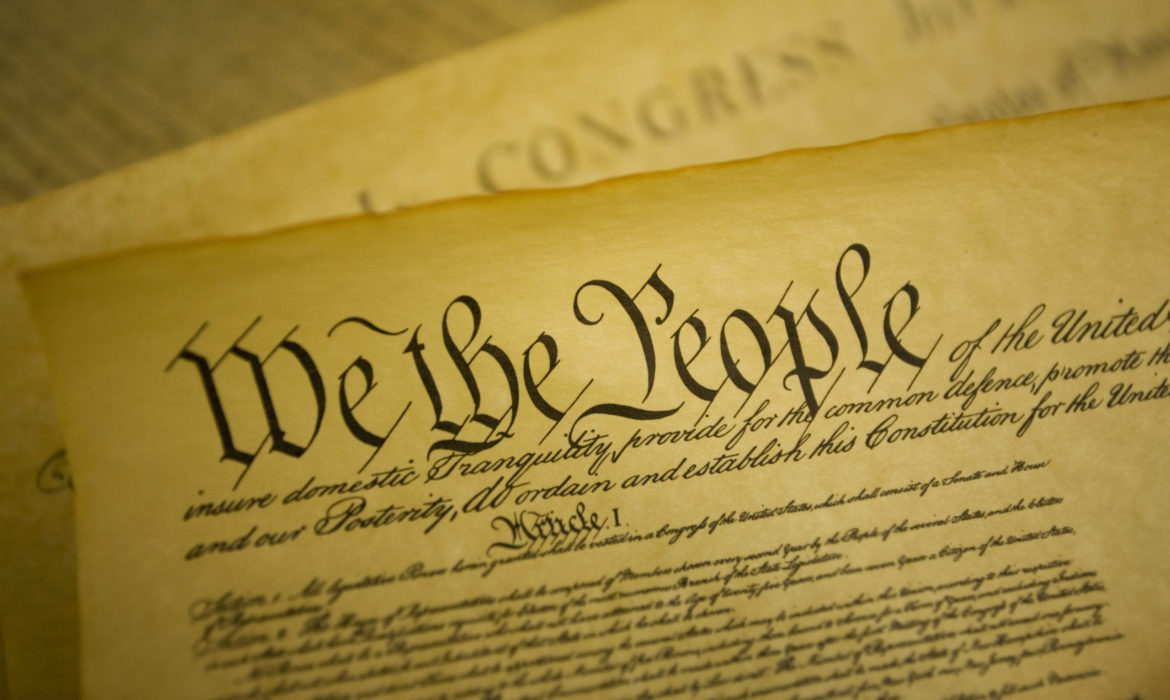
Two hundred and thirty years ago, the Bill of Rights began protecting the citizens of this country and the integrity of our democracy.
Over four years earlier, on September 17, 1787, the Constitutional Convention had concluded with the signing of the new U.S. Constitution.
Under Article VII, it was agreed that the document would not be binding until its ratification by nine of the 13 existing states. Several states voiced opposition to the Constitution on the grounds that it did not provide protection for certain inalienable rights – rights the framers believed were naturally theirs – “the great rights of mankind”. The terms of the Massachusetts Compromise reached in February 1788 stipulated that amendments to that effect would be immediately proposed following those states support of the passage of the Constitution. So, on September 25, 1789, the First Congress of the United States proposed 12 amendments to the U.S. Constitution. Ten of the proposed amendments were ratified by 3/4th of the State Legislatures on December 15, 1791.
The first TEN amendments to the Constitution—known as the Bill of Rights—were designed to give citizens more confidence in the new government and they contain many of the most valued freedoms associated with the United States – freedom of religion, freedom of speech, free press, freedom of assembly, privacy, due process of law, and equality before the law. On its face the Bill of Rights seemed to be written in broad language that excluded no one, but we know that, in reality, whole groups were left out.
- Women were left out, without even the right to vote until the 19th Amendment was passed in 1920.
- The Bill of Rights was in force for nearly 135 years before Native Americans were granted citizenship in their own land.
- It was 73 years after the passage of the Bill of Rights that slavery was abolished with the 13th amendment.
- It was 76 years after the Bill of Rights that former slaves were, at least on paper, given due process under the law pursuant to the 14th amendment. And the 14th Amendment also extended U.S. citizenship to all individuals born in the U.S.
- Of course, the 15th amendment, coming nearly 80 years after the passage of the Bill of Rights, provided that the right to vote shall not be denied or abridged by the United States or by any State on account of race, color, or previous condition of servitude.
The Bill of Rights, and the amendments that followed, exemplify the struggle to achieve unity and the compromise necessary attain it, from the earliest days of the United States. The Bill of Rights was written and ratified as a result of debate and a willingness to reach agreement on matters fundamental to our democracy. The concept arose from a dispute over whether basic, inalienable rights were inherent in the Constitution or needed to be stated as amendments. The struggle created by varied viewpoints made our Constitution stronger, but only because that struggle was paired with a dedication to finding accord. The Bill of Rights and later amendments sought to protect the great rights of humankind – for all humankind.
It is incumbent upon all of us as protectors of the Constitution and protectors of the rule of law to remember that our duty to support the more perfect union that the framers envisioned is never ending. We must constantly continue to advance the dream – opening our hearts and minds to those who have been excluded or ignored. We must work to make the constitution work for all.
So, let’s raise our glasses in a toast to the Constitution and to the 230th anniversary of the passage of the Bill of Rights.
About the Author
Julia A. Simon is Chief Legal Officer and Corporate Secretary for Mary Kay Inc., overseeing the company’s Legal Department, Risk Management, Corporate Communications and Corporate Social Responsibility functions. Her teams protect the company’s reputation and operations in nearly 40 markets around the globe. She is a member of the company’s executive committee and also serves as the Senior Privacy Officer for the company.

